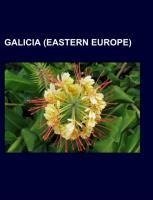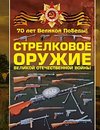
Galicia (Eastern Europe)
Source: Wikipedia. Pages: 117. Chapters: Galicia, Kingdom of Galicia and Lodomeria, Ukrainian Greek Catholic Church, Ivano-Frankivsk Oblast, Jewish-Ukrainian relations in Eastern Galicia, West Ukrainian People's Republic, List of people from Galicia, Western... Viac o knihe
Produkt je dočasne nedostupný
26.66 €
bežná cena: 30.30 €
O knihe
Source: Wikipedia. Pages: 117. Chapters: Galicia, Kingdom of Galicia and Lodomeria, Ukrainian Greek Catholic Church, Ivano-Frankivsk Oblast, Jewish-Ukrainian relations in Eastern Galicia, West Ukrainian People's Republic, List of people from Galicia, Western Ukrainian Clergy, Ternopil, Red Ruthenia, Kolomyia, Lviv Oblast, Ugartsthal, Kamianka-Buzka, Belz, Halych, Battle of Zawichost, Berezhany, Walddeutsche, Priestly Society of Saint Josaphat, Drohobych, Brody, Ternopil Oblast, Nadvirna, Meir Balaban, Conversion of Chelm Eparchy, Turka, Ukraine, Diet of Galicia, Tarnopol Voivodeship, Stanislawów Voivodeship, Volodymyr-Volynskyi, Battle of Krasnik, Buchach, Pogórzanie, Yevhen Petrushevych, Kalush, Ukraine, List of towns of the former Kingdom of Galicia and Lodomeria, Coloman of Galicia-Lodomeria, Pidhaitsi, Vovchynets, Zalischyky, Lemko Republic, Pokuttya, Yaroslav Osmomysl, Khryplyn, Chervonohrad, Chortkiv, List of rulers of Galicia and Volhynia, West Galicia, Olyka, Kozova, Liubartas, Galicia Jewish Museum, Lemkivshchyna, Voynyliv, Kuty, Husiatyn, Kosher tax, Metodyj Trochanovskij, Kosiv, Uhornyky, Andrew of Galicia, Karl Emil Franzos, Lev II of Galicia, Subdivisions of Galicia, Cheremosh River, Zolochiv, Pidhaitsi Raion, Coat of arms of Lviv, Christian Social Movement in Ukraine, Tysmenytsia, Republic of Tarnobrzeg, Berezhany Raion, Prykarpattia, Volodymyrko Volodarovych, District of Galicia, Heiress Maria of the Duchies of Galicia, Budaniv, Cheremkhiv, Zvenyhorod, Zabolotiv, Broshniv-Osada, Bukachivtsi, Galician Assembly, Shutromintsy, West Galician Code. Excerpt: Galicia, Galizia or Halychyna (German: ; Polish: , Ukrainian: , Czech: , Yiddish: (Galitsie), Hungarian: , Russian: (Galichina)) is a historical region in Eastern Europe, currently divided between Poland and Ukraine, named after the medieval city of Halych, currently the village of Krylos near the modern city of Halych (Ukraine); first mentioned in Hungarian historic chronicles in the 1206, as Galiciæ et Lodomeriæ . The nucleus of historic Galicia is formed of three regions of western Ukraine: Lviv, Ternopil and Ivano-Frankivsk. Coat-of-arms of the Principality and Kingdom of Galicia-Volhynia in the 13th-14th centuryThe region has a turbulent history. In Roman times the region was populated by various tribes of Celto-Germanic admixture, including Celtic-based tribes - like the Galice or "Gaulics" and Bolihinii or "Volhynians" - the Lugians and Cotini of Celtic, Vandals and Goths of Germanic origins (the Przeworsk and Púchov cultures). Several ethnographers consider the local boiko people part of the Celtic tribes. Beginning with the Wandering of the nations, the great migration coincident with the fall of the Roman Empire, various groups of nomadic people invaded the area: Overall, Slavs (both West and East Slavs, including Lendians as well as Rusyns) came to dominate the Celtic-German population. In 891-892 the territories of White Croats and Red Croats became under the control of the Great Moravia, a Slavic state. With the invasion of the Magyars into the heart of the Great Moravian Empire around 899, Slavic tribes of Vistulans, White Croats, Red Croats, and Lendians found themselves under Hungarian rule. In 955 those areas north of the Carpathian Mountains constituted an autonomous part of the Duchy of Bohemia and remained so until around 972, when the first Polish (western Polans) territorial claims began to emerge. This area was mentioned in 981 (by Nestor), when Vladi...
- Vydavateľstvo: Books LLC, Reference Series
- Formát: Paperback
- Jazyk:
- ISBN: 9781157625452


 Anglický jazyk
Anglický jazyk 



 Ruský jazyk
Ruský jazyk 





